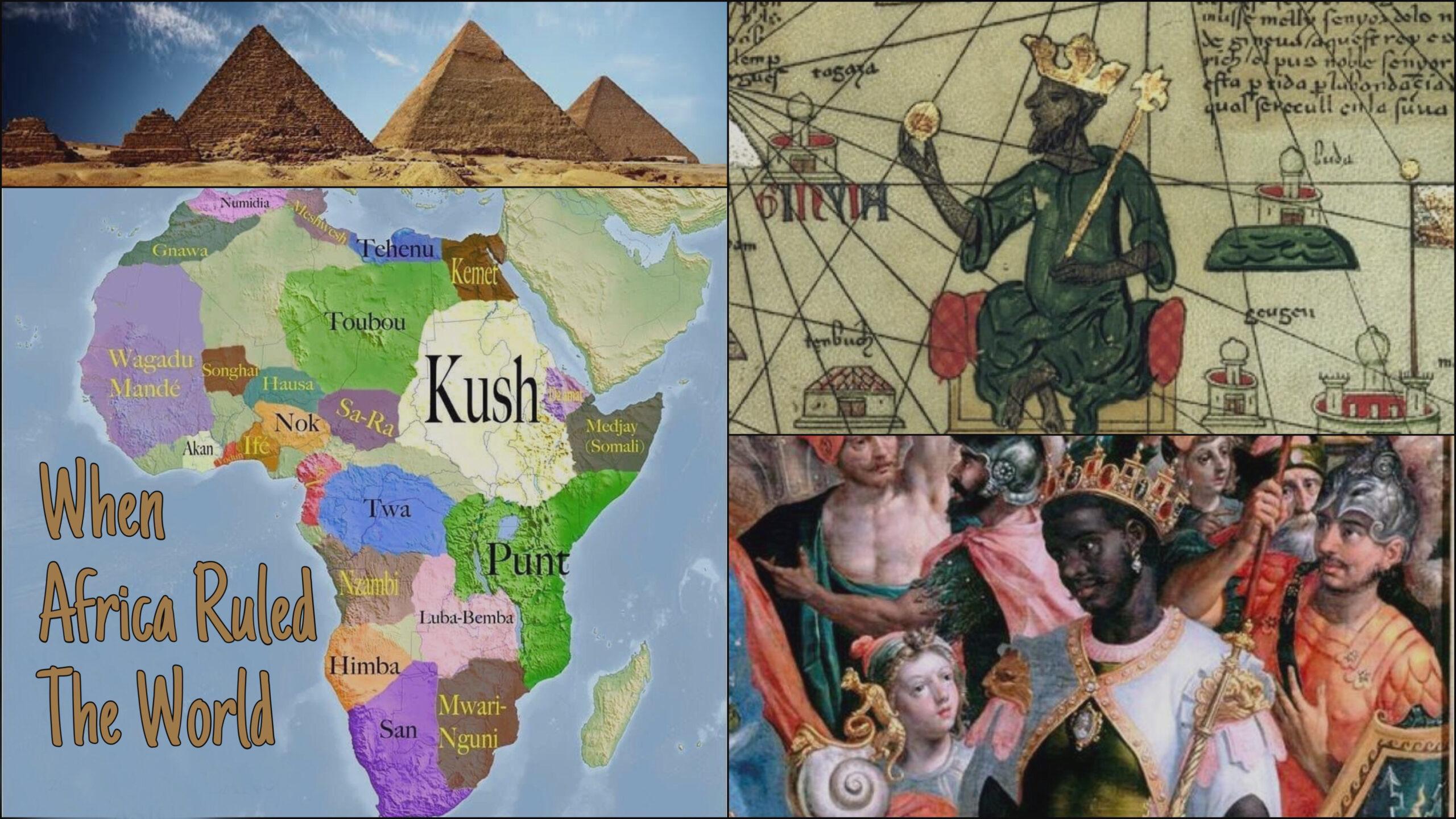In ancient times, the Oracle of Amon at Siwah was the most celebrated, and Heliopolis, Memphis, and Thebes, were representatives of the best of Egyptian civilization and culture. Thebes, a beautiful city on the Nile had the Grand Temples, and as the governing body of the Egyptian Mystery System, constituted the only Grand Lodge in the ancient world.
The architecture of the temples of Thebes is still a marvel today. Here is how C.H. Vail in (Ancient Mysteries) describes it: “At a short distance from Danderah, now called Upper Egypt, is the most extraordinary group of architectural ruins presented in any part of the world, known as the Temples of the ancient city of Thebes. Thebes in its prime, occupied a large area on both sides of the Nile.
This city was the center of a great commercial nation of Upper Egypt, ages before Memphis was the capital of the second nation in Lower Egypt; and however grand the architectural monuments of the latter may have been, those of the former surpassed them. The portrayal by pencil or brush can convey but a faint idea of the perfected city.
“As the city stands, it is like a city of giants, who after a long conflict have been destroyed, leave the ruins of their temples as the only proof of their existence. The Temple of Luxor (it was in this temple that the Grand Lodge of Initiates always met) stands on a raised platform of brickwork covering more than two thousand feet in length and one thousand feet in breath. The oblong shape became the pattern for all Lodges and Churches in the ancient world.
It is the one that interests the members of all Ancient Orders, especially so, all the members of those Orders that worshipped at the shrine of the Secret Fire, more than perhaps any other, and stands on the eastern bank of the Nile. It is in a very ruined state, but records say the stupendous scale of its proportions almost takes away the sense of its incompleteness. Up to about a quarter of a century ago, the greater part of its columns in the interior and outer walls had been removed after falling, for use elsewhere.
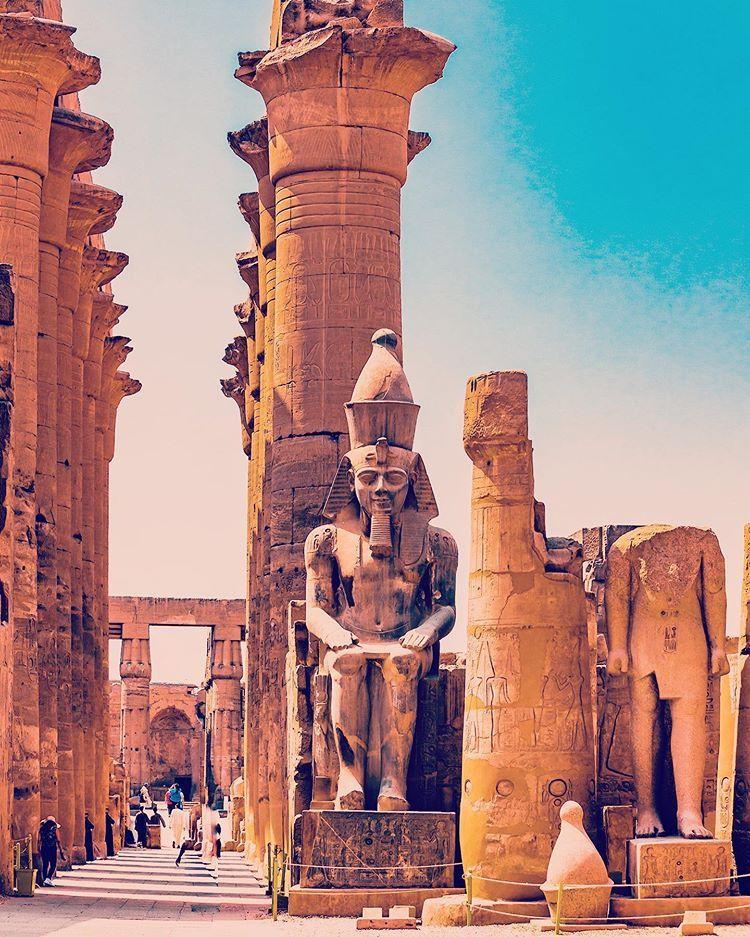
“The Pharaoh Amenophis III, who constructed the southern part, including the heavy colonnade overlooking the river, founded this temple; but destruction unfortunately conceals this fact. The chief entrance to the temple looked at the east, while the Holy Chambers at the upper end of the plain approached the Nile.
As mighty as the Temple of Luxor was, that of Carnak exceeded it in magnitude and grandeur. The distance between these two great structures was a mile and a half. Along this avenue was a double row of Sphinxes, placed twelve feet apart, and the width of the avenue was sixty feet. When in perfect state, this avenue presented the most extraordinary entrance that the world has ever seen.
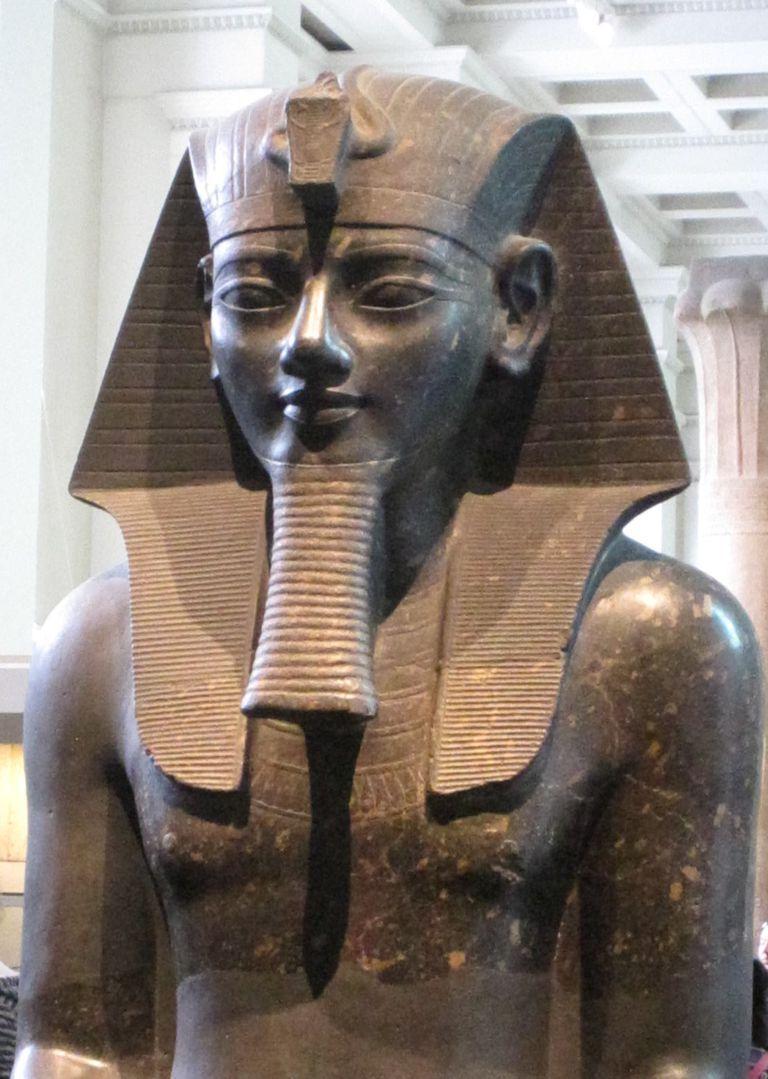
“If we had the power to picture from the field of imagination the grand processions of Neophytes constantly passing through and taking part in the ceremonies of Initiation, we would be powerless to produce the grandeur of the surroundings, and the imposing sight of colour and magnificent trappings of those who took part. Neither can we produce the music that kept the vast number of people in steady marching order. Crude it might have been to the cultivated ear of the 20th century. But could not the palpitating strain, sung by massed voices on the lapse of time, whose history launches the profoundest aspirations of the human heart, like the trend of a mighty river, become the grand currents of Universal Law, imparting the desire to the shadowy past as it steps forth from the pages of history, dim with age? Egypt must have been, when these temples were built, a martial nation for records of her warlike deeds are perpetuated in deeply engraved tablets which even now, excite the admiration of the best Judges of archaeological remains.
“She was also a highly civilized nation, and of a nature that could bear the expenditure which always attends the culture of the arts. She surpassed in her astonishing architecture, all other nations that have existed upon the earth. Egyptian temples were surrounded with pillars recording the number of the constellations and the signs of the Zodiac or the cycles of the planets. And each temple was supposed to be a microcosm or a symbol of the universe or of the starry vault called temple.”
Max Muller in (Egyptian Mythology) tells us that: “Egyptian temples were made of stone, the outer courts of mud bricks. Wide roads led to the temples for the convenience of processions, while the immediate entrance was lined with statues, consisting of sphinxes and other animals. The front wall formed two high tower like buildings, called pylons, before which stood two granite obelisks. Immediately behind the pylons came a large court where the congregation assembled and watched the sacrifices. Immediately next to the hall of the congregation, came the hall of priests, and immediately following the hall of the priests, came the final chamber called the Adytum, i.e., the Holy of Holies, which was entered only by the High priest. This was the place of the shrine and the abode of the God.
“Each temple was a reproduction of the world. The ceilings were painted to represent the sky and the stars, while the floor was green and blue like the meadows. Ceremonial cleanliness was at all times imperative, and the people before entering the temple must carefully purify themselves in a nearby stream. In later times, this became a ceremony of sprinkling with holy water before entrance into the temple.” From the foregoing descriptions, it is easy to appreciate where modern churches and lodges copied their traditions, identity and internal decorations.
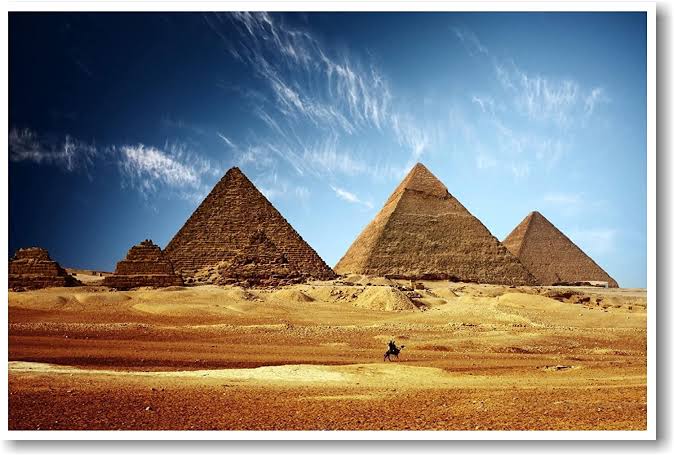
The pyramids in Gizeh, we are told, were built around 2560 BCE. They are associated by modern Egyptologists with Pharaoh Sneferu’s son, Khufu, also known as Cheops, and his sons, Khafre and Menkure. Khufu reigned for 23 years. The Sphinx of Gizeh, a massive figure, is an awe inspiring achievement. It was erected to guard the entombed Pharaoh Khafre. It is a figure that has the body of the lion and human head. Other sphinxes are ram-headed, depicting wisdom, mystery and power. The Sphinx of Queen Harshepsut, an 18th Dynasty Queen of Egypt, has human head.
A manuscript by Abu’L Hassan Ma’sudi, the Coptic scribe, which is kept at the Bodeleiean Library, Oxford, confirms that the pyramids are wrongly dated by modern historians. Abu’L Hassan Ma’sudi’s information also suggests that the date attributed to the building of, for instance Saqqara pyramid, 2700 BCE, by archaeologists may be grossly out of place. Ma’sudi tells us that Surid, a king of Egypt before the flood, had two pyramids built. He ordered his priests to deposit inside them all the wisdom and knowledge of the sciences then available.
Plato (427-347 BCE) hinted at the age of the ancient spiritual rituals. According to Plato, some elevating Egyptian songs and poems used in the mysteries had been in use for at least 10,000 years during his time. He reckoned that the gods must have composed them.
Herodotus in his Histories Apodexis said that the priests of Thebes told him that the pyramids had been handed down from father to son high priests for 11,340 years at the time of Herodotus’ visit.
The priests showed Herodotus (484–425 BCE), 341 statues that represented each generation of their high priests, and said that the gods had lived among them but that for some time then, no god had appeared in human form.
They told him that their race is the most ancient of mankind. They also told him that the sun had twice risen where it now sets, and twice set where it now rises. This means that the poles of the earth had completely changed over from their former positions involving immense shifts of land and water. It also means that the climate at the poles had formerly been tropical, instead of arctic. Evidence that the priests are right is the fossilized remains of swampy tropical forests, found in such places as Alaska and Antartica. It is difficult to imagine the zodiac and the Temple of Dendera in Karnak Egypt show a cosmic movement of 90,000 years ago. Three and a half Great Years more on the cosmic dial. 25,800 solar years make one “Great Year.” Science is yet to collect sufficient data with which to sketch out an accurate picture of prehistoric ages and of the life of man during those ages.
NASA’s Mariner Mission’s early 1970 photographic mapping of Mars from close range, showed a series of huge pyramid shaped features, which NASA’s scientists nicknamed “Inca City.” Dr. Richard C. Hoagland, a scientist with NASA, claimed that a place on Mars named Cydonia, has ruins of an entire Martian city, full of pyramids and man made monuments. The pyramids are geometrically aligned with the face of the largest five-sided pyramid. Further studies have confirmed that the pyramids on Mars are shaped exactly like the Gizeh and that Gizeh’s measurements tally with Mars pyramids’ measurements. Water and Earth like soil, have been found on Mars, so, it is possible that the Red planet is still or was inhabited or used as a laboratory or base station, by extraterrestrial beings to explore the Earth and clone humans.
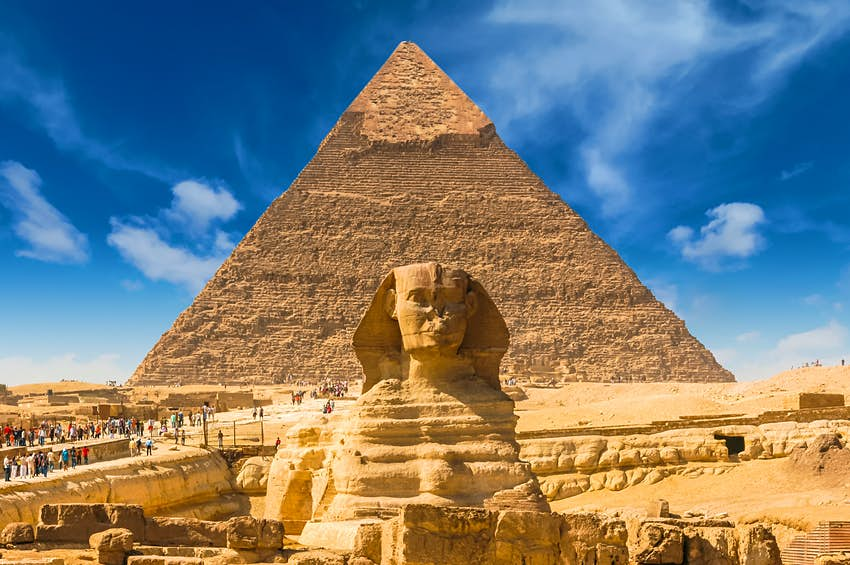
A proverb found in the Gizeh pyramid reads: ‘Man fears time and time fears the pyramids.’ A plate of iron made thousands of years before the Iron Age was found in the Gizeh pyramid. The following notation: 195,955,200,000,000 was found on the Kuyunjik hill, formerly Nineveh, a calculation with fifteen digits.
Greek’s calculation, at their most brilliant epoch, 2,300 years ago, stopped at the 10,000 figure; anything above that was described as infinite. The number Pi was found in the Gizeh pyramid, therefore, preceding Archimedes’ supposed ‘discovery’ by thousands of years. The word pyramid is Greek for ‘Fire in the middle.’ Ancient Egyptians called their pyramids pre-Neter, meaning the House of Nature, which compares with nature or house of energy in Latin. Egypt had more than 80 pyramids while Sudan (Nubia) had about 100.
The Gizeh was 450 feet high on the West bank of the River Nile near modern Cairo. According to Heredotus, 100,000 men took 20 years to build it. To be sure the detailed facts of its construction remained a secret, all the workers who knew about the secrets were buried beneath the pyramid. The Great Pyramid of Gizeh is a symbolic record of ancient scholarship and wisdom.
It is one of the world’s largest edifices, occupying some thirteen acres of land. In the great pyramid they placed information about the heavenly spheres and figures that represent the stars and planets, their positions and cycles, and also the foundations of mathematics and geometry. They did this so that the information would be preserved forever for those descendants who could read the signs. Nostradamus predicted that the mysteries buried in the secret chambers of the pyramids would expose our origin and nature.
The Gizeh is located at the center of the earth’s land mass. It seems to have been built to prevent the wobble of the earth and balance its magnetic fields and land mass in response to the earth’s every 50,000 years axis shift of 23 degrees. Gizeh is at the exact center of all the land lines of the world drawn through the North – South, East – West, axis to divide the earth’s terrain equally at Gizeh.
Its East-West land parallel through Africa, Asia and North and South America, cut across the longest North-South land meridian through Asia, Africa, Europe and Antarctica at Gizeh. The star Vega shines down its descending shaft to its pit revealing profound knowledge of astronomy, and aligns with the stars in the Orion belt as well as the star Sirius, which the Egyptians call Sothis.
All the pyramids align with the stars in the Orion constellation: Zeta Orionis, Epsilon Orionis and Delta Orionis. They are all in the thirty degrees parallel to the north of the equator and pass close to within a few nautical miles of the Bermuda triangle.
Experiments have shown that what happens in the pyramids contradicts all known laws of physics and electronics. Gizeh demonstrates profound knowledge of astronomy, acoustics, engineering, and its mathematically exact structure confers on it the divine image of eternity. Apart from the great feat of its ingenuous construction with relatively unsophisticated techniques, it has facilitated the accurate calculation of the sun’s distance from the earth.
Astronomers have noted in the Great pyramid says Diop, “indications of the sidereal year, the anomalistic year, the processions of the equinoxes for 6,000 years, where as modern astronomy knows them for only about 400 years. Mathematicians have detected in it, the exact value of “Pi,” the exact average distance between the sun and the earth, the polar diameter of the earth and so on.”
Scientists confirm that the pyramids served as electromagnetic antennae, creating standing columnar waves. The electromagnetic properties of the pyramids direct light to an energy source, which as the glue of the universe, serves as the bond between spiritual and physical realities, facilitates esoteric advancement of consciousness, and reach to the highest extraterrestrial energies for human fulfillment in all spheres of life.
The pyramids were, therefore, built to connect us with our creators. Their foundations are built on the laws of nature projecting the resurrection of spirit from matter. The four base points of the pyramids represent (Set) fire, (Nefu) air, (Mu) water, (Ta) earth, while the top depicts the fifth element (Hu) which is Atum (the Supreme being) and the Egyptian source of creativity.
The Great Pyramid symbolized the gate to eternal life for those who succeeded in passing from the material world into the transcendental parts of nature. The temple is the symbol of life, light, truth and immortality in the Egyptian mysteries and recent scientific findings confirm that the shape of the pyramid radiates certain energy fields which electronic scientists have been unable to unravel.
Egyptian prophets, seers and sages, drew divine energies from the sanctified temples cleansed of evil to regulate, focus, and facilitate human development and survival. During initiation the disciple experienced divine enlightenment; he experienced first hand the illusion of death (changing consciousness) and the rising again to serve in the world of men. It was this wisdom, developed to a high degree, which brought the wise from all parts of the world to study the laws known in Egypt.
To get a sense of the size, comprehensiveness and splendour of the oldest libraries in the world, we quote from George G.M.James (Stolen Legacy.) A brief sketch of the magnificence of the Theban Royal Library; the Menephtheion, built in 1320 BCE, shows ”a better picture and are bound to admit that Egypt was the store house of ancient culture and knowledge and these were preserved in the form of literature stored away in her great libraries and temples.
Great as the Royal Library of Alexandria might have been, we see in the Theban Royal Library, something far more magnificent and far more representative of the true greatness of our ancient Egypt.
“On the left of the steps leading to the second court, there is still seen the pedestal of the enormous granite statue of Remeses; the largest, that ever existed in Egypt, according to Diodorus the Greek Historian. Its height has been calculated at fifty-four feet, and its weight, at 887.25 tons, a marvel to the modern mind. The interior face of the wall of the pylon represents the wars of Remeses III.
The Osiride pillars of the second court, are the monolithal figures, sixteen cubits in height, supplying the place of columns, and at the foot of the steps leading from the court to the next hall beyond, there were two sitting statues of the king. The head of one of these was of red granite, known by the name of ‘Young Memon,’ was taken away by Belzoni, and is now a principal ornament of the British Museum. Beyond this are the remains of a hall 133 feet broad by 100 feet long, supported by 48 columns, twelve of which are thirty-two feet in height and 21 feet in circumference.
“On different parts of the columns and the walls, are represented acts of homage by the king to the principal deities of the Theban Pantheon, and the gracious promises, which they make him in return. In another sculpture the two chief divinities of Egypt invest him with the emblems of military and civil dominion, i.e., the Scimitar, the Scourge and the Podium beneath, the twenty-three sons of Rameses appear in procession, bearing the emblems of their respective high offices in the state, their names being inscribed above them.
Nine smaller apartments, two of them still preserved, and supported by columns, lay behind the hall. On the jambs of the first of these apartments are sculptured Thoth: the Inventor of Letters, and the Goddess Saf, with the title of ‘Lady of Letters; and ‘President of the Hall of Books,’ accompanied the former with an emblem of the sense of sight, and the letter of hearing. There is no doubt that this is the Sacred Library which Diodorus describes as the inscribed ‘Dispensary of the Mind.’
“It had an astronomical ceiling, in which the twelve Egyptian months are represented, with an inscription from which important inferences have been drawn respecting the chronology of the reign of Rameses III. “On the walls is a procession of priests, carrying the Sacred Arts, and in the next apartment, the last that now remains, the king is presenting offerings to the various Divinities.” Read (Ancient Egypt by J.Kendrick Bk.1 p128-131, Report of French Commission.)
Pharaoh Menes reigned around 3200 BCE. Senusert I, during the 12th Egyptian Dynasty (about 1900 BCE) conquered the whole sea coast of India beyond the Ganges to the eastern ocean. He is said to have included Cyclades and a great part of Europe in his conquests. Around 1640 BCE, some 70 Hebrews under the leadership of Joseph, son of Jacob, son of Isaac, entered Egypt from Canaan, fleeing from another great drought.
Doris Darkwah in (The Role of Africa in the rise of Judaism) tells us that: “They were welcomed and given food and shelter by the hospitable Egyptians. They enjoyed the rights and privileges of Egyptian citizenship, some becoming high officials in the government giving up Semitic names for Egyptian ones. Joseph was in Pharaoh Kamoses cabinet as Prime Minister and he took the Egyptian name of Zaphnathpaaneah. Yanhamu was a leading General under Amenophis IV (Akhnaton.)
The Pyramids and the Obelisk had already been completed before any Hebrew set foot in Egypt; hence the idea of their being used as slave labour on those constructions is false. Pictures found on tombs show the Hebrews to be foreigners from their clothes and beards, but also that they were not in captivity. Of course, many of them laboured side by side with the Egyptians in making bricks for the outer enclosures of temples or cities, the main building effort of the day.”
Upper Egypt remained under the leadership of Egyptian Theban kings who kept on mobilizing their people against foreigners. They finally succeeded in 1546 BCE when Pharaoh Tuthmosis III, expelled the Hyksos and reunited Egypt for the third time to usher in the glorious eighteen Dynasty of Queen Hatshepsut.
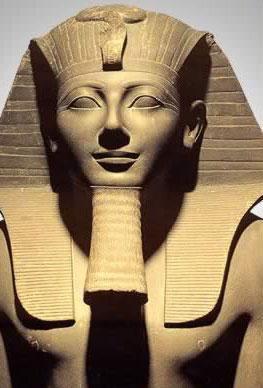
During the reign of Pharaoh Tuthmosis III in the eighteenth Dynasty, Egypt’s prestige as a great imperial power was restored after a period of political stress at home. The domination of Egypt extended not only along the coast of Palestine, but also from Nubia to Northern Asia. Tuthmosis III, whose mother was a Sudanese Nubian, began his reign on the death of Queen Hatshepsut in 1546 BCE. Tuthmosis was an outstanding leader.
He over-ran Western Asia and all the islands of the Eastern Mediterranean, reducing all the states in the area to vassals of Egypt. Some of the vassal states were Mitani (an Indo-European state on the Upper Euphrates) Babylonia, Glicia the Hittite state, Cyprus, Crete (Greece) etc. Syria and Palestine were integrated into Egypt since they had always been considered Blackstates. These two states provided garrison posts on their shores for the Egyptian armies. The vassal rulers paid homage to the Pharaoh in the most humble and submissive language. “I am your footstool. I lick the dust from your sandals. You are my sun,” a Syrian vassal wrote to Ameophis IV.
The Amarna letters found in the government office of the Egyptian King Akhnaton, confirm that Egyptian Empire extended to Western Asia, Syria, Palestine in the 18th Dynasty (1500 BCE) and that up to the 6th century BCE Egypt was the foremost military, technical and imperial power in the world.
After the eighteen Dynasty, Egypt began to hold as hostages, sons of vassal rulers from Asia and the Mediterranean to train in the Pharaoh’s court in the hope of their becoming good vassals later in their countries. This practice helped to expand Egyptian influence considerably in Western Asia and the Mediterranean.
According to Edouard Schure (Les Grands Inities, Paris 1908. Pp6-13) “at the time of their domination, the Blacks had religious centres in Upper Egypt and India. Their gigantic cities crenellated the mountains of Africa, Caucasia and Central Asia. Their social organization was an absolute theocracy. Their priests possessed profound knowledge, the principle of the divinity, unity of the universe and the cult of the stars which became Sabaeanism among the Whites, an active industry, especially the art of handling colossal masses of stone by ballistics and of smelting metals in immense furnaces worked by prisoners of war.”
African leadership of the world suffered its first serious military neglect with Pharaoh Akhnaton’s philosophy of inaction in the face of foreign hostilities from about 1350 BCE. Amenophis IV (Akhnaton) known as the ‘Heretic’ pharaoh, reigned from 1378 – 1350 BCE. Doris Darkwah in (The Role of Africa in the rise of Judaism) tells us that: “by about 1350 BCE, international expansion had become the order of the day. Pharaoh Amenophis opposed war as a means of achieving this, and also opposed other forms of violence. He was a poet and writer in addition to being a pacifist, idealist and humanitarian.
This leader, Amenophis IV, renamed himself Akhnaton, meaning, ‘Devoted to the God Atom.’ He combined absolute authority as a monarch with compassion towards his fellowman. He imposed a religion based upon monotheism on his people, using it to strengthen his central government. Pharaoh Amenophis IV wrote psalms that read like those of the Bible, at least 400 years before David was born. Amenophis, Father of Tut-Ankh-Amen, is called the most remarkable of the Pharaohs.”
Pharaoh Akhnaton was the first to divert attention from God Amon. Pharaoh Akhnaton marginalized the priests of Amon and installed himself as the spiritual and political head of Egypt. This selfish, ill-informed action condemned the Africans to the dustbin of history because, it facilitated the liberal atmosphere that eventually tolerated the lies, antics and sorcery against Egypt, of Moses and his fellow travellers.
Without the spiritual energy that provided tribal or group cohesion, comfort and inspirations, and even ensured triumph in earlier epoch, the African did not only become vulnerable, he was helpless to defend himself. Although Akhnaton thought he was introducing the One God concept, he was in reality installing himself as agent of something he could not explain. He destroyed the hierarchical concept in African spirituality and in the process our spiritual focus and we became confused. We became exposed to incessant invasion by all and sundry.
The end of the reign of Ramses II and that of Merneptah witnessed great migrations of people that upset the ethnic balance around the Mediterranean and in western Asia from 1230 BCE. Exodus of Israelites from Egypt also took place in 1230 BCE. From 1230 BCE, Egypt continually had to defend its borders against the immense trust of White–skinned people from the north, the sea and the east.
Alexandre Moret (Le Nil et la Civilization Egyptienne) tells us that “About the month of April, 1229 BCE, Pharaoh Merneptah at Memphis learned that the King of the Libyans, Merirey, was coming from the land of Tehenu with his archers and a coalition of “People of the North,” composed of Shardana, Siculans, Achaeans, Lycians, and Etruscans, the warrior elite of each country.
His aim was to attack the western frontier of Egypt in the plains of Perir. The danger was all the graver since the (Egyptian) province of Palestine itself was affected by the disturbance. Indeed, it seems that the Hittites had also been embroiled in the turmoil, although Merneptah had continued his good offices in their behalf, sending them wheat by his ships at the time of a drought, to help the land of Khatti to survive.”
Egyptians defeated the coalition of barbarian hordes after a six hour long battle. Survivors passed the memory of the war on for generations. Moret says: “Merirey fled at top speed, abandoning his arms, his treasures, and his harem. Moret reported among the slain 6,359 Libyans, 222 Siculans, 742 Etruscans, and Shardana and Achaeans by thousands. More than 9,000 swords and pieces of armour, and a great booty were captured on the battlefield.
Merneptah engraved a hymn of victory on the walls of his mortuary temple of Thebes, in which he described the panic among his enemies. The young Libyan men said of the victories: “We have had none since the days of Ra,” and the man said to his son “Alas! poor Libya!” The Tehenu have been consumed in a single year. And the other provinces outside Egypt were also reduced to obedience. Tehenu is laid waste, Khatti is pacified, Canaan is pillaged, Ascalon is despoiled, Gezer is captured, Yenoam is annihilated, Israel is made desolate and no longer has any crops, Kharu has become like a widow (without support) against Egypt. All the countries are unified and pacified.”
The captives taken in by Pharaoh Merneptah were given as slaves to various temples to express his gratitude to the gods. That was how the White man began to settle in large numbers in Egypt. They came as prisoners, transformed into slaves, chained and branded. Libya was not a country then but a corruption of Lebou; the name Africans called their White slaves. After defeating the Etruscans and Libyans, Pharaoh Merneptah embarked on pacifying Palestine, where the first group of ‘Sea People’ arrived. Africans called the ‘Sea People,’ who were, in fact, Indo-Europeans or Achaean fugitives, Palestiou, which is how the name Palestine came about in 1222 BCE.
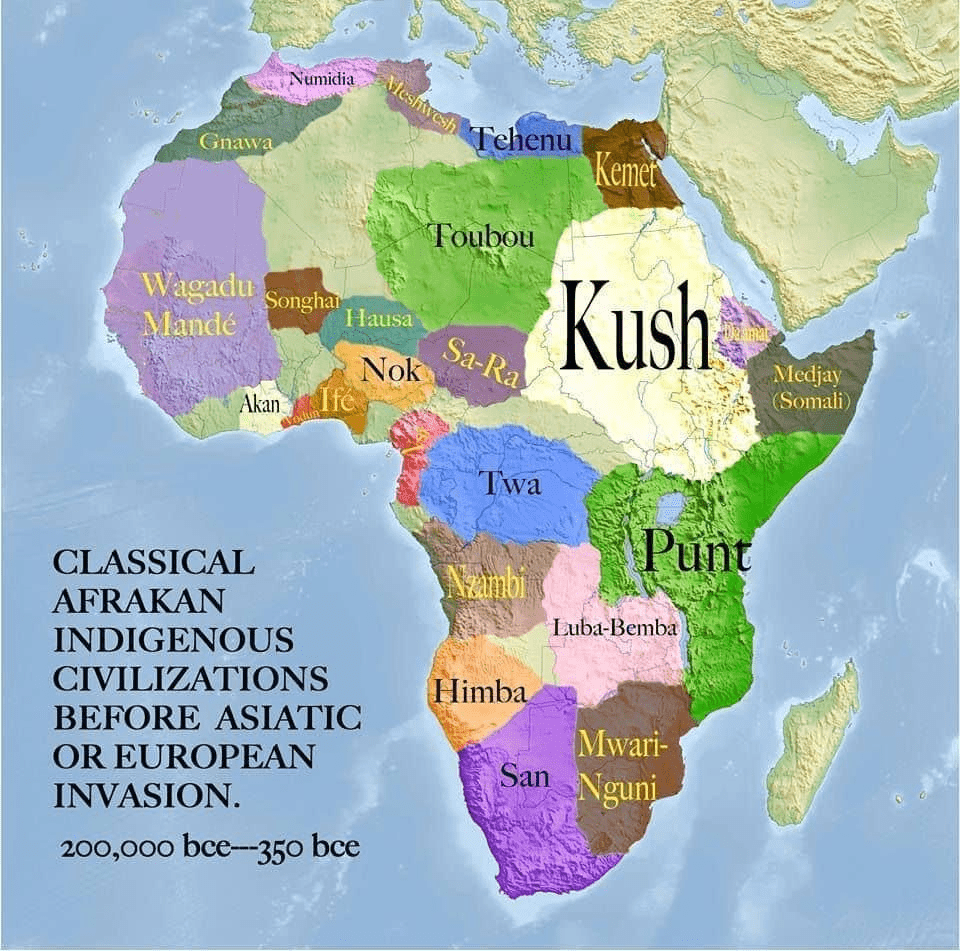
Diop tells us that: “Pharaoh Merneptah speaks of all those people as rebellious vassals. The text specifically states that the land of the Hittites is pacified, thereby confirming the notion that, after the conquest of the Hittites land by Pharaoh Tuthmosis III in 1546 BCE, Palestine never ceased to be a vassal of Egypt. ……Merneptah sent them wheat to avoid famine.…… The White slaves captured from the rebellions were given to the Egyptian temples where the priests employed them either in farming or in the local militias.
But as central authority collapsed in Egypt, however, local militias increasingly assumed local security functions. To take advantage of the anarchy, Syrian, Palestinian and Libyan slaves rebelled under the leadership of their foremen and military officers of their race, who supervised their labour in Memphis to create a village that they controlled and called Babylon, in memory of their country. Similarly, Phrygians founded a short lived village called Troion, in memory of Troy.” Effort to quell the disorder came once again from the interior of Africa. Seti, the Viceroy of Nubian Sudan, marched on Thebes to re-establish order in Egypt.
Because of the ancestral oneness and close ties between Egypt and the rest of Africa, most of Egypt’s leaders, particularly during periods of serious national crisis or confrontation with the non-African world, kept coming from Nubia-Sudan/Ethiopia. To spiritually demonstrate this, Diodorus informs us that “each year, a statue of the attribute, God Amon (Christians pray to this African King as Amen, confirming continued African spiritual leadership of the world), as King of Kings, was erected in Thebes (the spiritual capital and Holy City of Egypt.) This statue was transferred in the direction of Nubia for several days and then brought back as if to indicate that the King of Kings was returning from Nubia or the heart of Africa, the source of human life. Nubia-Sudan and Ethiopia were involved in joint military and spiritual activities around the world throughout ancient times.
Greece took over leadership of the world from us in 332 BCE and lost to Rome in 49 BCE. Rome ruled for less than 1,500 years. The US has been in control in the last 50 years after unleashing World War II bombs on Hiroshima. China is on the verge of ruling the world.
Africa must cut China’s reign short as ancestors of mankind with ordained leadership responsibilities to repair, restore and renew our troubled earth, making it more beautiful and beneficial for all who inhabit it, rich or poor, Jews or gentiles, Black or White, animate or inanimate matter.
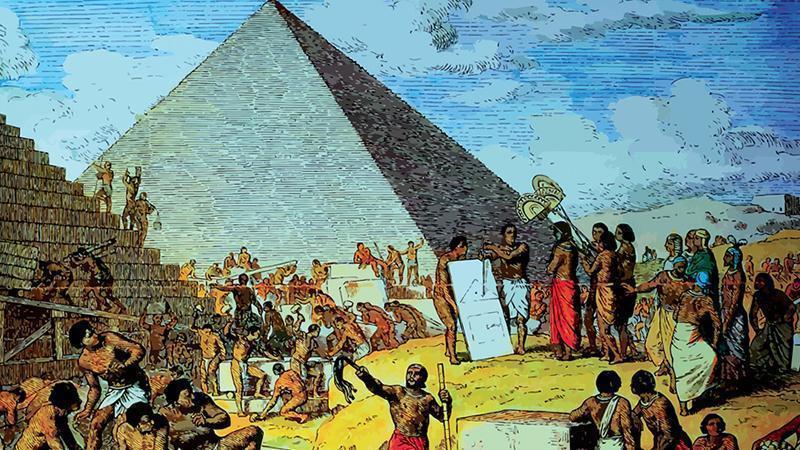
NAIWU OSAHON Hon. Khu Mkuu (Leader) World Pan-African Movement); Ameer Spiritual (Spiritual Prince) of the African race; MSc. (Salford); Dip.M.S; G.I.P.M; Dip.I.A (Liv.); D. Inst. M; G. Inst. M; G.I.W.M; A.M.N.I.M. Poet, Author of the magnum opus: ‘The end of knowledge’. One of the world’s leading authors of children’s books; Awarded; key to the city of Memphis, Tennessee, USA; Honourary Councilmanship, Memphis City Council; Honourary Citizenship, County of Shelby; Honourary Commissionership, County of Shelby, Tennessee; and a silver shield trophy by Morehouse College, USA, for activities to unite and uplift the African race.
Naiwu Osahon renowned author, philosopher of science, mystique, leader of the world Pan-African Movement.
BY: SAHARA REPORTERS
 The African History Truly African
The African History Truly African
